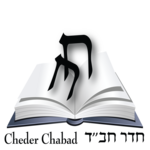The name of the Parshah, “Tazria,” means “conceives” and it is found in Leviticus 12:2.
The Parshah of Tazria continues the discussion of the laws of tumah v’taharah, ritual impurity and purity.
A woman giving birth should undergo a process of purification, which includes immersing in a mikvah (a naturally gathered pool of water) and bringing offerings to the Holy Temple. All male infants are to be circumcised on the eighth day of life.
Tzaraat (often mistranslated as leprosy) is a supra-natural plague, which can afflict people as well as garments or homes. If white or pink patches appear on a person’s skin (dark red or green in garments), a kohen is summoned. Judging by various signs, such as an increase in size of the afflicted area after a seven-day quarantine, the kohen pronounces it tamei (impure) or tahor (pure).
A person afflicted with tzaraat must dwell alone outside of the camp (or city) until he is healed. The afflicted area in a garment or home must be removed; if the tzaraat recurs, the entire garment or home must be destroyed.
Learn: Tazria in Depth
Browse: Tazria Parshah Columnists
Prep: Devar Torah Q&A for Tazria
Read: Haftarah in a Nutshell
Play: Tazria Parshah Quiz


Join the Discussion